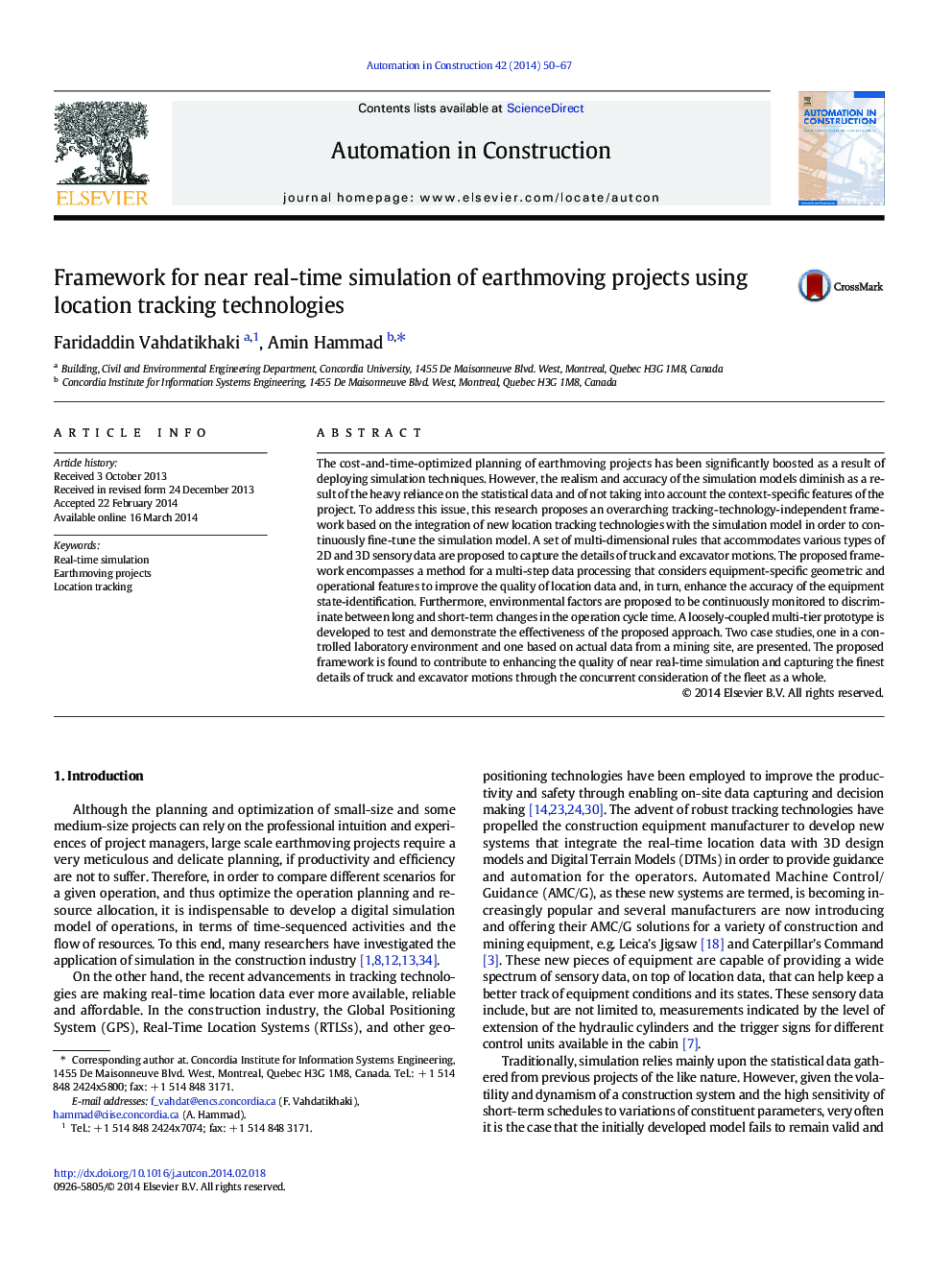| Article ID | Journal | Published Year | Pages | File Type |
|---|---|---|---|---|
| 246744 | Automation in Construction | 2014 | 18 Pages |
The cost-and-time-optimized planning of earthmoving projects has been significantly boosted as a result of deploying simulation techniques. However, the realism and accuracy of the simulation models diminish as a result of the heavy reliance on the statistical data and of not taking into account the context-specific features of the project. To address this issue, this research proposes an overarching tracking-technology-independent framework based on the integration of new location tracking technologies with the simulation model in order to continuously fine-tune the simulation model. A set of multi-dimensional rules that accommodates various types of 2D and 3D sensory data are proposed to capture the details of truck and excavator motions. The proposed framework encompasses a method for a multi-step data processing that considers equipment-specific geometric and operational features to improve the quality of location data and, in turn, enhance the accuracy of the equipment state-identification. Furthermore, environmental factors are proposed to be continuously monitored to discriminate between long and short-term changes in the operation cycle time. A loosely-coupled multi-tier prototype is developed to test and demonstrate the effectiveness of the proposed approach. Two case studies, one in a controlled laboratory environment and one based on actual data from a mining site, are presented. The proposed framework is found to contribute to enhancing the quality of near real-time simulation and capturing the finest details of truck and excavator motions through the concurrent consideration of the fleet as a whole.
